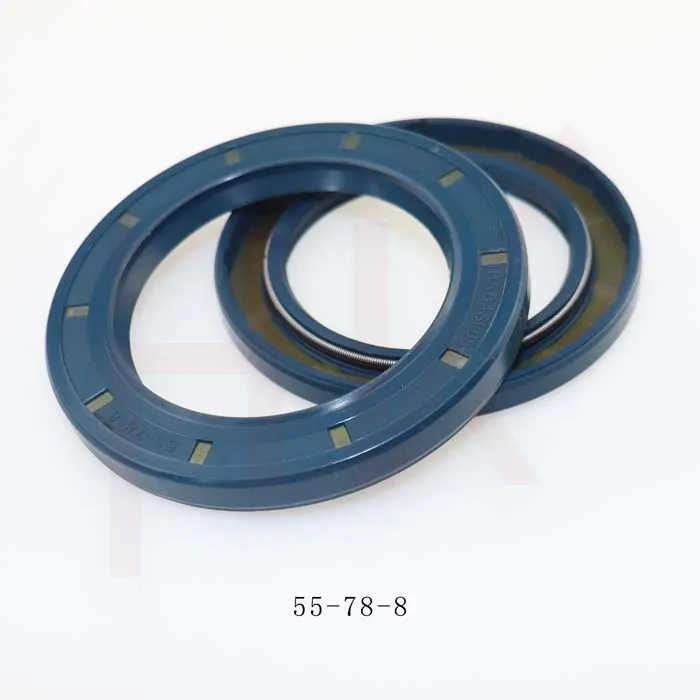Dec . 04, 2024 08:09 Back to list
How to Change Wiper Seal on a Hydraulic Cylinder Safely and Effectively
Replacing the Wiper Seal on a Hydraulic Cylinder
Hydraulic cylinders form the backbone of numerous industrial machines, providing the force and motion necessary for a range of operations. One critical component of these systems is the wiper seal, which plays a pivotal role in ensuring the longevity and efficiency of the hydraulic cylinder. Over time, wiper seals can wear out, leading to issues such as leakage and contamination. This article will guide you through the processes involved in replacing the wiper seal on a hydraulic cylinder.
Understanding the Wiper Seal
The wiper seal, often referred to as a dust seal, is located at the outer end of the hydraulic cylinder. Its primary function is to prevent dust, dirt, and other contaminants from entering the cylinder while also keeping hydraulic fluid contained. When the wiper seal is damaged or worn, it can lead to contamination of the hydraulic fluid, which in turn can damage internal components of the cylinder and reduce operational efficiency.
Signs of a Worn Wiper Seal
Before diving into replacement, it’s essential to identify the signs of a worn wiper seal. Common indicators include
1. Fluid Leaks If you notice hydraulic fluid pooling around the cylinder, it could mean that the wiper seal has failed. 2. Contamination If there’s dirt or debris present on the rod or within the hydraulic system, the wiper seal may not be functioning properly.
3. Performance Issues If the cylinder is lagging in response or seems less powerful than usual, worn seals could be the culprit.
Tools and Materials Needed
Before starting the replacement process, gather the following tools and materials
- New wiper seal (specific to your hydraulic cylinder model) - Safety gloves - Clean rags - Hydraulic oil - Seal removal tool or pry bar - Lubricant (compatible with hydraulic systems) - Torque wrench (for reassembly)
replacing wiper seal on hydraulic cylinder

Step-by-Step Replacement Process
1. Safety First Before beginning any work, ensure the hydraulic system is depressurized and the power is turned off. Wear safety gloves to protect your hands.
2. Remove the Cylinder Disconnect the hydraulic lines and remove the cylinder from its mounting. This may require the use of wrenches and other tools, depending on your specific setup.
3. Clean the Area Use clean rags to wipe away any dirt or fluid from the exterior of the cylinder, particularly around the wiper seal area.
4. Remove the Old Wiper Seal Carefully pry out the old wiper seal using the seal removal tool or a suitable pry bar. Take care not to damage the cylinder rod or the housing during this process.
5. Inspect the Rod Before installing the new seal, inspect the rod for any signs of wear, scratches, or damage. If the rod is damaged, it may need to be repaired or replaced before proceeding.
6. Install the New Wiper Seal Lubricate the new wiper seal with compatible hydraulic oil. Carefully install the new seal into the designated groove on the cylinder, ensuring it is seated evenly all around.
7. Reassemble the Cylinder After successfully installing the wiper seal, reassemble the cylinder and reconnect it to the hydraulic lines. Use a torque wrench to ensure all fittings are tightened to the manufacturer’s specifications.
8. Test the System After reassembly, pressurize the hydraulic system slowly and check for leaks. Monitor the cylinder’s performance and ensure it operates smoothly without any signs of contamination.
Conclusion
Replacing the wiper seal on a hydraulic cylinder is a straightforward task that can significantly improve the functionality and longevity of the hydraulic system. Regular maintenance and timely replacement of worn seals can prevent costly repairs and downtime in the future. Always follow safe practices and consult your equipment’s manual for specific instructions and recommendations. With the right tools and steps, you can keep your hydraulic systems in optimal working condition.
-
TCN Oil Seal Metal Ring Reinforcement for Heavy Machinery
NewsJul.25,2025
-
Rotary Lip Seal Spring-Loaded Design for High-Speed Applications
NewsJul.25,2025
-
Hydraulic Cylinder Seals Polyurethane Material for High-Impact Jobs
NewsJul.25,2025
-
High Pressure Oil Seal Polyurethane Coating Wear Resistance
NewsJul.25,2025
-
Dust Proof Seal Double Lip Design for Construction Equipment
NewsJul.25,2025
-
Hub Seal Polyurethane Wear Resistance in Agricultural Vehicles
NewsJul.25,2025
-
The Trans-formative Journey of Wheel Hub Oil Seals
NewsJun.06,2025
Products categories
















